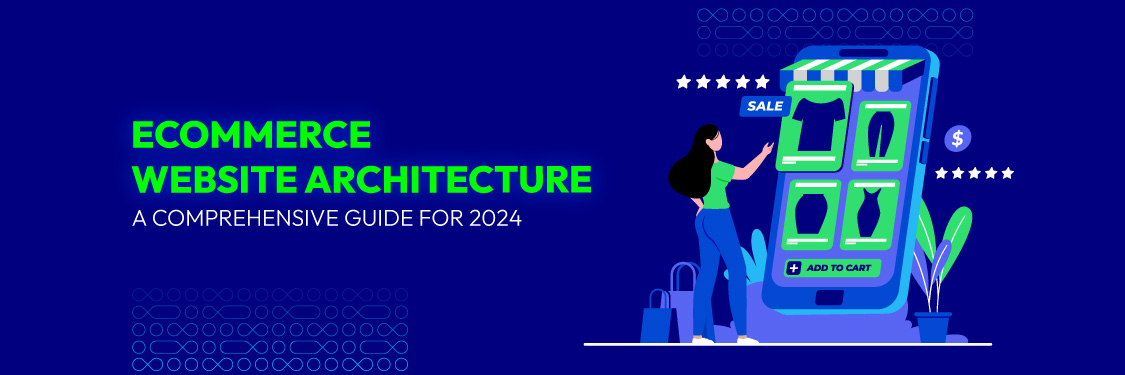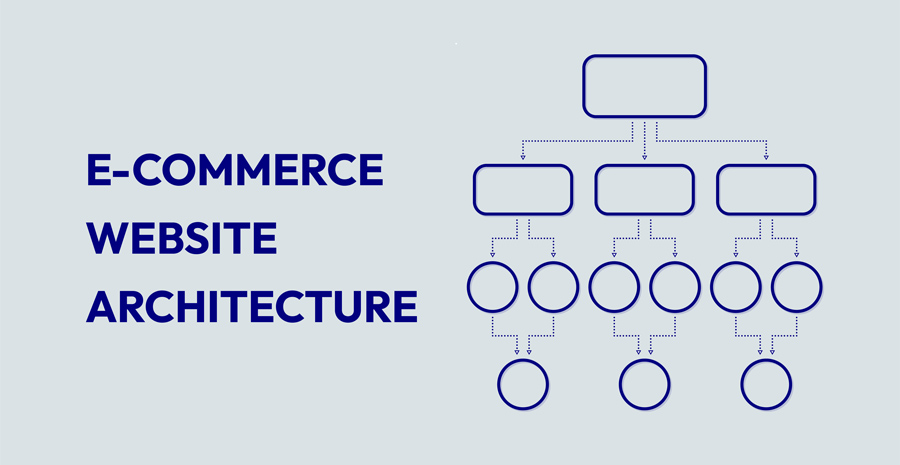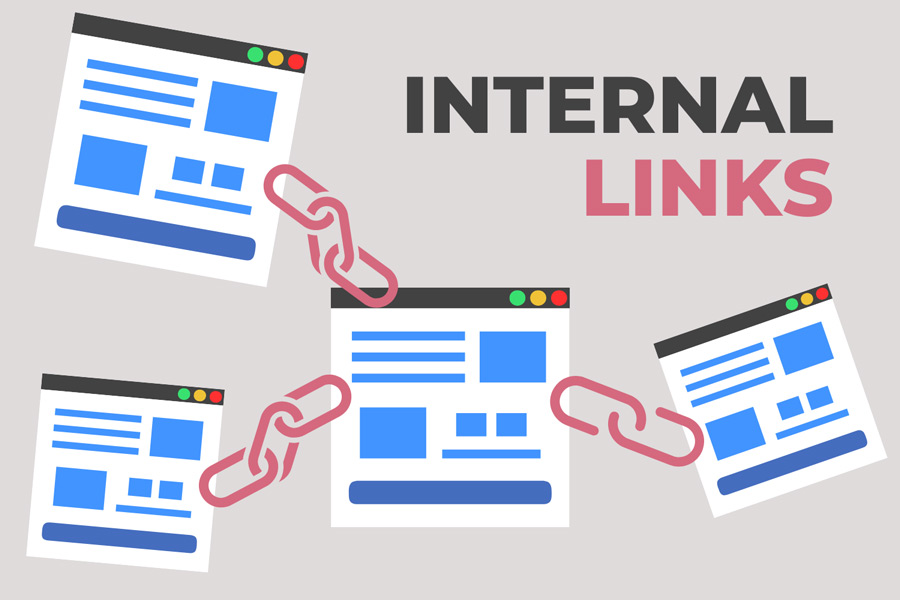Ecommerce Website Architecture: A Comprehensive Guide for 2024
Summer Nguyen | 08-30-2024

In 2023, global online shopping sales reached approximately $5.8 trillion ; experts expect this number to grow by 39% by 2027. A strong website is crucial for success in such a competitive market.
A big part of this success comes from how your ecommerce website is built. A well-structured site makes everything work smoothly, from easy browsing for customers to secure payments. In this blog, we’ll explore the key components of ecommerce website architecture, how it impacts performance, and the best practices for long-term success.
What Is Ecommerce Website Architecture?
Ecommerce website architecture refers to the structural design and organization of an online store. It encompasses arranging and connecting different site elements to create a seamless user experience. A well-built ecommerce website architecture improves user experience, enhances performance, and supports the overall success of the online store.

Types of Ecommerce Website Architecture
When creating an online store for your business, choosing the right architecture is crucial for ensuring performance, scalability, and ease of maintenance. Here are three common types of ecommerce website architecture:
Two-tier Architecture
In a two-tier architecture, the website is divided into two layers: the client-side (frontend) and the server-side (backend). The client-side is responsible for presenting the user interface and sending requests to the server. The backend, which includes the database and the server logic, handles these requests and returns the necessary data to the frontend. This architecture is relatively simple and cost-effective, making it suitable for small ecommerce websites with limited traffic and simple functionalities.
Pros:
- Simplicity in design and implementation.
- Cost-effective for small-scale applications.
- Direct communication between client and server reduces latency.
Cons:
- Limited scalability as the website grows.
- Increased load on the server as the number of users increases.
- Less flexibility in managing complex business logic.
Three-tier Architecture
A three-tier architecture introduces an additional layer between the client and the server: the application layer (or middleware). This layer is responsible for processing the business logic, acting as an intermediary between the frontend and the backend. The three-tier model separates concerns, allowing for better scalability and easier management of complex web applications.
Pros:
- Better scalability and maintainability compared to two-tier architecture.
- Separation of concerns allows for easier development and updates.
- Improved security by isolating the database from direct client access.
Cons:
- More complex to design and implement.
- Requires more resources to maintain.
- Slightly higher latency due to the additional layer.
Microservices Architecture
Microservices architecture is a modern approach where the website is divided into small, independent services that communicate with each other via APIs. Each service handles a distinct aspect of functionality, such as user authentication, payment processing, or product management. This architecture is highly scalable and allows for continuous integration and deployment, making it ideal for large, complex ecommerce platforms.
Pros:
- High scalability and flexibility.
- Independent services can be developed, deployed, and scaled separately.
- Resilience to failure as each service operates independently.
Cons:
- Increased complexity in managing and orchestrating services.
- Requires a robust infrastructure to handle service communication.
- More difficult to monitor and debug due to the distributed nature.
Advantages of Ecommerce Website Architecture
A well-structured ecommerce website architecture offers numerous benefits that can significantly impact your business’s success:
- Better User Experience: A user-centric architecture enhances navigation, product discovery, and checkout processes, increasing customer satisfaction. Keep in mind, 91% of unsatisfied customers will leave your online store without complaining, and 13% will tell at least 15 people about their bad experience.
- SEO Optimization: Site architecture is a key factor that impacts your website’s ranking on search engines. A solid architecture helps search engines crawl and index your site effectively, leading to more discoverable pages and increased organic traffic. Keep in mind that 68% of online experiences begin with a search engine.
- Enhanced Performance: A streamlined architecture leads to faster loading times and smoother interactions, which boost user experience and conversion rates. Since 79% of shoppers won’t return to a site with poor performance, a strong website architecture with optimized site speed is crucial for retaining customers and driving sales.
- Scalability: As your business grows, a flexible architecture allows you to efficiently handle increased traffic, expand your product offerings, and integrate new features without compromising performance. This adaptability helps you stay ahead of competitors and meet evolving customer needs.
- Improved Security: A robust architecture provides a solid foundation for safeguarding sensitive customer data. By incorporating advanced security measures and regular updates, you can prevent data breaches, build customer trust, and comply with data protection regulations.
- Cost-Efficiency: An efficiently designed architecture helps optimize maintenance service costs and resources. Streamlined systems and processes minimize the need for frequent updates and troubleshooting, leading to long-term savings and more efficient operations.
- Data-Driven Decision Making: A well-structured architecture supports effective data collection and analysis. By integrating tools for tracking user behavior and sales metrics, you can obtain valuable insights, make informed decisions for your business, and tailor your strategies to better meet customer expectations.
- Future-Proofing: A forward-thinking architecture accommodates emerging technologies and market trends. This adaptability keeps your website relevant and competitive, allowing you to leverage new opportunities and innovations as they arise.
Key Components of Ecommerce Website Architecture
Front-End Components

The front-end of an ecommerce website is the part visitors interact with directly. In the front-end, there are vital components for ecommerce website architecture that you should know:
- User Interface (UI): Visual elements like layout, color schemes, and buttons that shape the look and feel of the site.
- User Experience (UX): Overall experience, including loading times, mobile responsiveness, and navigation, affects how users interact with the site.
- Navigation Structure: Organized categories, menus, and breadcrumbs that make it easy for users to find products.
- Search and Filtering: Advanced search tools and filters that help customers quickly locate products, enhancing usability and effectiveness.
- Product Display: High-quality images, detailed descriptions, and dynamic filters that aid in making informed purchase decisions and boost engagement and conversions.
Back-End Components
The back-end of an ecommerce website powers everything behind the scenes, ensuring smooth operations and robust functionality. Key components of the ecommerce website architecture include:
- Content Management System (CMS): Manages website content, allowing for easy updates and organization of product pages, blogs, and other assets.
- Database Management: Handles product info, user data, and orders, ensuring quick data retrieval and site performance.
- Security Layers: Protects customer data with SSL certificates, encryption, and other security measures to build trust and comply with regulations.
- Third-Party Integrations: Connects with payment gateways, shipping providers, analytics tools, and marketing platforms to enhance functionality and efficiency.
Analytics and Reporting
In the architecture of an ecommerce website, analytics and reporting are crucial for optimizing performance and making data-driven decisions.
- Customer Behavior Tracking: Monitors user movement, drop-off points, and purchase paths to identify issues and enhance usability, focusing on metrics like page views and click-through rates.
- Sales Reporting: Provides insights into product performance, sales trends, and customer details, aiding in stock management, pricing, and marketing strategies.
- A/B Testing: Compares two versions of a page to determine which performs better, optimizing user experience.
- Data-Driven Decision Making: Utilizes analytics insights to make informed decisions, improving site performance based on real data.
Best Practices for Ecommerce Website Architecture
Plan Your Structure And Sitemap
A well-planned structure and sitemap are foundational for creating a successful e-commerce website, impacting usability, search engine visibility, and site management.
- URL Structure: Your website’s URL structure should be simple, logical, and descriptive. Use short, readable URLs that include relevant keywords. For example, instead of using a long string of numbers or characters, use URLs like yoursite.com/category/product-name. This not only helps customers understand the content of the page at a glance but also improves your SEO by making it easier for search engines to index your pages.
- Sitemap:A sitemap is known as the blueprint of your website. It lists all the pages available for search engines to crawl. Creating and maintaining an XML sitemap helps search engines easily find and index all the important pages on your site. To enhance your sitemap:
- Group Similar Pages: Organize pages by category to make navigation easier for both audience and search engines.
- Include Essential Pages: Ensure that key pages like product categories, product details, and checkout pages are included in your sitemap.
- Regular Updates: Update your sitemap regularly as you add or remove pages. This helps search engines accurately index your site, improving its visibility.
Use Schema Markup
Using schema markup is one of the effective ways for search engines to better understand your website’s content. For ecommerce sites, using relevant schema types like Product, Review, Offer, and Breadcrumb is essential. This enhances your SEO by providing search engines with clear information, which can lead to rich snippets in search results, making your listings more attractive and clickable.

Use tools like Google’s Structured Data Testing Tool to ensure your schema markup is correctly implemented. Regularly check for errors to maintain accuracy.
Properly implemented schema markup not only improves search engine rankings but also improves user experience by providing valuable information upfront, potentially increasing conversion rates.
Design For Growth
When building your website architecture, it’s crucial to design with future growth in mind. As your business expands, your website must be able to accommodate increased traffic, a larger product catalog, and more complex operations. Here’s how to design for growth effectively:
- Scalable Architecture: Choose a scalable architecture that can handle increased traffic and data as your business grows. Opt for a flexible design that allows for easy additions and updates without a complete redesign. This ensures your website can evolve with your business needs without compromising performance.
- Flexible Infrastructure: Use cloud-based solutions to provide flexibility and scalability. Cloud hosting helps you quickly scale up resources during high-traffic periods and scale down when demand is lower, optimizing costs and performance. This adaptability is crucial in supporting growth without service interruptions.
- Future-Proof Technology: Invest in technologies designed to evolve with industry trends. Regularly update your platform, plugins, and security protocols to stay current and avoid technical debt. Choosing a platform with strong support and an active development community can help ensure your site remains up-to-date and competitive.
- Expandable Product Catalog: Plan your website’s structure to accommodate a growing product range. Organize categories and subcategories logically to easily add new products without disrupting the user experience. This planning allows for smooth expansion and helps maintain a clean, organized site as your inventory grows.
- Performance Optimization: Maintaining fast loading times and a seamless user experience is very important as your website grows. Regularly optimize your site’s performance by compressing images, minifying code, and leveraging caching techniques. Focusing on performance ensures that your site can handle growth without slowing down.
Planning for growth helps create a robust e-commerce website architecture, allowing your online store to adapt easily as your business expands. This ensures that your website can accommodate future needs while delivering a reliable and enjoyable experience for users at all times.
Optimize Website Navigation
Effective website navigation delivers a seamless user experience and improves overall site usability. Here’s how to optimize navigation on your eCommerce site:
- Clear and Intuitive Menu Structure: Design your main navigation menu with clarity and simplicity. Use straightforward labels for menu items and categorize products logically. A well-organized menu helps users quickly find what they’re looking for, reducing frustration and enhancing their browsing experience.
- Mobile-Friendly Navigation: Ensure your navigation is responsive and user-friendly on mobile devices. Utilize collapsible menus and touch-friendly design elements to create a smooth experience for mobile users.
- Breadcrumbs for Context: Breadcrumbs provide users with links showing their current location within your site’s hierarchy. They enhance navigation by allowing users to quickly return to previous pages or explore higher-level categories without using the back button. Implementing breadcrumbs improves SEO by helping search engines understand your site’s structure and content relationships.
- Prominent Call-to-Action Buttons: Strategically place CTA buttons, such as “Shop Here” or “Add to Cart,” to guide users towards key actions. Ensure these buttons are easily accessible and stand out visually to encourage engagement and conversions.
- Consistent Navigation Elements: Maintain consistency in navigation elements across all pages of your site. Users should encounter the same menu structure and design, which helps them navigate with ease and predictability.
With these strategies, you’ll create a user-friendly navigation system that not only enhances the overall browsing experience but also supports your site’s SEO and conversion goals.
Map And Incorporate Your Target Keywords
Effectively mapping and incorporating target keywords enhances your e-commerce website’s visibility and drives relevant traffic. Here’s how to integrate target keywords into your site’s architecture to maximize SEO benefits:
- Conduct Thorough Keyword Research: Start by figuring out the keywords and phrases your target audience might use to search for your products or services. Use keyword research tools to find high-volume and relevant keywords that match your business goals.
- Strategically Place Keywords in Key Areas: Incorporate target keywords into critical elements such as page titles, meta descriptions, headings, subheadings, product titles & descriptions.
- Utilize Alt Text for Images: Add descriptive, keyword-rich alt text to product images and other visual content. This practice helps with SEO and improves accessibility for users with visual impairments.
- Develop Keyword-Rich Content: Create high-quality content that incorporates your target keywords naturally. This could include blog posts, buying guides, and FAQs related to your products. Relevant and informative content helps establish your site as an authority and drives organic traffic.
By carefully mapping and incorporating target keywords into your e-commerce website architecture, you enhance your site’s search engine visibility, attract qualified traffic, and ultimately drive more conversions.
Implement Internal Link Strategies
Internal link strategies play a critical role in shaping the architecture of an e-commerce website. Here’s how to optimize internal links of your e-commerce website:
- Link from High-Traffic Pages to High-Value Pages: Identify pages that receive high traffic and use them to link to important pages that you want to rank higher, such as new product launches or seasonal promotions.
- Use Descriptive Anchor Text: Ensure that the anchor text is descriptive and relevant to the content of the linked page. This helps users understand what they’ll find when they click the link and aids search engines in understanding the context.
- Prioritize User Experience: While internal linking is important for SEO, always prioritize the user experience. Links should be helpful and relevant, not forced or overused.
- Regularly Audit and Update Links: As your website grows, conduct regular audits to identify broken links, outdated content, or opportunities to add new internal links to boost newer or underperforming pages.

Utilize Canonical Tags
Canonical tags help avoid duplicate content problems by showing which version of a page is the main one, which helps prevent penalties and consolidates SEO benefits to a single URL. They direct search engines to the primary page, concentrating link authority and improving ranking potential while enhancing crawl efficiency by guiding bots to the most relevant content.
- Use Canonical Tags for Similar Products: For e-commerce sites with variations of products (e.g., different colors or sizes), use canonical tags to point to a single, primary product page to avoid duplicate content issues.
- Apply Canonical Tags to Pagination: Using canonical tags to direct to the main category page when dealing with paginated content, such as product listings across multiple pages.
- Regularly Review Canonical Tags: Ensure that canonical tags are correctly implemented and updated, especially when content is modified or new pages are added.
Common Mistakes When Building An Ecommerce Website Architecture
While implementing best practices is crucial, avoiding common pitfalls is equally important to ensure the success of your e-commerce site architecture. Here are some mistakes to watch out for:
- Overcomplicated Navigation: Complex navigation can overwhelm users, making it difficult for them to find products and leading to higher bounce rates. Keep your navigation intuitive and straightforward to enhance user experience.
- Poorly Optimized Checkout Process: A cumbersome checkout process can result in cart abandonment. Ensure your checkout is streamlined, with minimal steps and clear instructions, to encourage conversions.
- Neglecting Mobile Users: With most online shopping happening on mobile devices, neglecting mobile optimization can alienate a large portion of your audience. Ensure your online store is responsive and offers a smooth experience across all devices.
- Ignoring SEO Fundamentals: Overlooking basic SEO practices like keyword optimization, internal linking, and canonical tags can hinder your site’s visibility in search engines. Prioritize these elements to drive organic traffic and improve your search rankings.
Final Thoughts
A solid ecommerce website architecture is crucial for delivering an effective and user-friendly online shopping experience. By implementing the recommended best practices, businesses can enhance usability, boost customer satisfaction, and drive higher conversion rates. As ecommerce continues to evolve, prioritizing a robust website architecture will remain essential for achieving long-term success in the competitive online marketplace.






![Top 20+ Must-have Shopify Apps for 2025 [Free & Paid] - Mageplaza](https://cdn2.mageplaza.com/media/blog/must-have-shopify-apps/top-must-have-shopify-apps.png)
![[2025 Updates] Top 10+ Upsell Apps for Shopify - Mageplaza](https://cdn2.mageplaza.com/media/blog/best-upsell-shopify-app/cover.png)